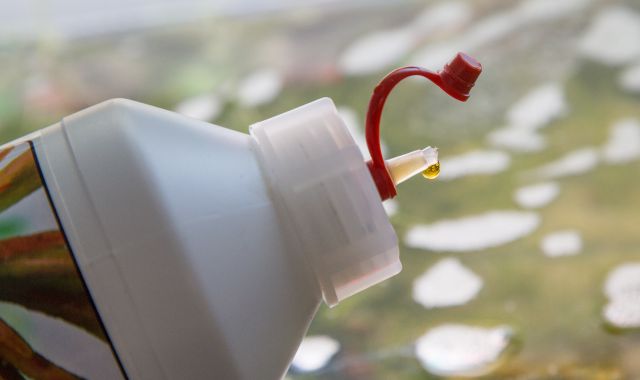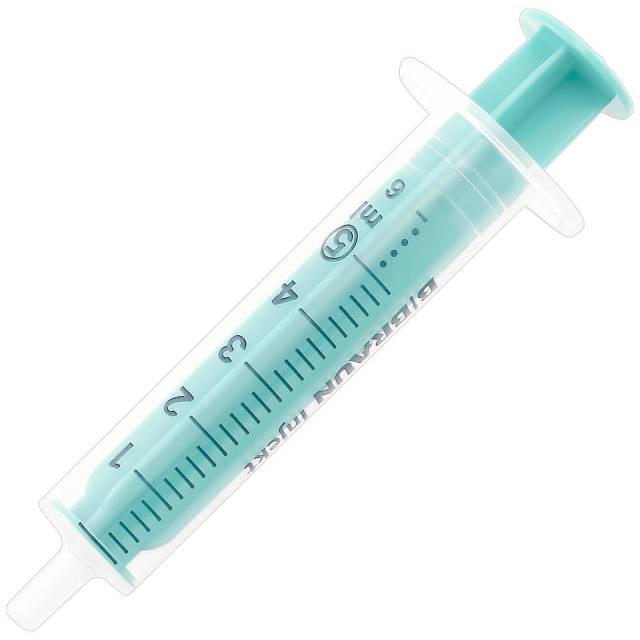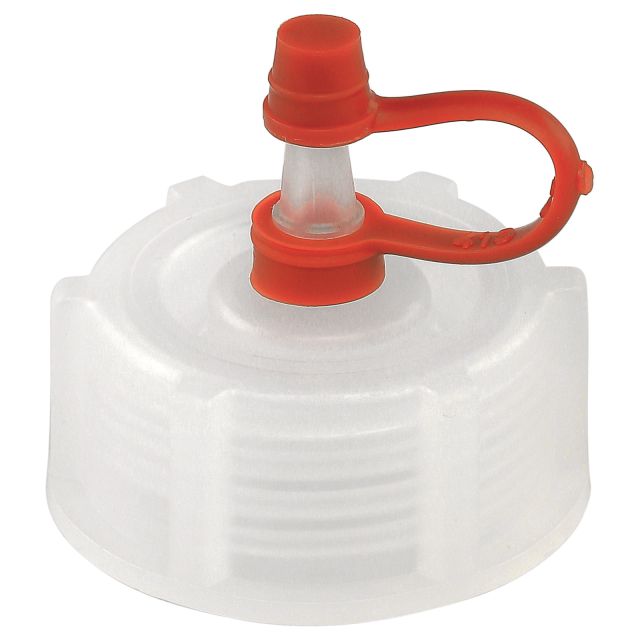In very small tanks, like nano aquariums, that are used as aquascapes or planted tanks, adding the liquid fertilizer can sometimes be a bit of a hassle. Depending on the aquarium volume, only very small amounts of daily fertilizer are required, sometimes even less than 1 ml. This can - for example - be the case with a complete iron fertilizer. This means, using a dosing pump is off the table, because one stroke of the pump amounts to roughly 1 ml - which is way too much for such a small amount of water. But we have a solution for this problem as well.
Dropper
The Aqua Rebell Dropper can be screwed onto all available Aqua Rebell bottles. With the dropper, you can add fertilizer drop by drop. The dispenser is sealed upon delivery and should be punctured at the tip with a thin needle to allow for drop-by-drop dispensing. If you cut the tip off with a pair of scissors, the amount of fertilizer that comes out will be too large.

To convert the number of droplets to milliliters, you can use the following rule of thumb: About 20 drops make 1 milliliter. An example: the daily requirement for a nano tank with plants is 0.5 ml of the complete iron fertilizer Aqua Rebell Mikro Basic Eisen. Ergo, ten drops should be administered with the dropper once a day.
Syringes

Another possibility is the addition of fertilizer by means of a syringe. Depending on the scale of the syringe, an accurate dosage in 0.2 or 0.1 ml increments is possible. The so-called insulin syringes are particularly well-suited for this task, since their scape is very fine and precise. Nevertheless, the addition with a syringe is quite laborious. Especially when your fertilizer bottle is only half full or less, you'll first have to pour the nutrient solution into another, smaller vessel in order to draw up the syringe. In addition, syringes tend to get sticky after some time, especially when complete iron fertilizers are administered with them. To avoid this, the syringe should be rinsed with clean water after each application. This method has more disadvantages, especially in terms of cleanliness. When you work with the fertilizer bottle, a cup and the syringe, it may happen that a drop of fertilizer ends up on the floor cabinet, leaving unsightly stains.
Thinning the fertilizer
Couldn’t you just dilute the fertilizer with water and then, by implication, be able to dose larger amounts of liquid?
This is actually a simple solution, and makes it possible to set the fertilizer dose to 1 ml flat, even for very small aquariums, which will enable you to use the 1 ml dosing pump, whoopdeedoo! For this purpose, the nutrient solution is mixed with water at a certain ratio. For example: A fertilizer/water ratio of 1:1 dilutes the nutrient solution by half. If you add 1 ml of this mix, your effective nutrient content will only be 50% the amount.
Unfortunately, this method also has disadvantages. On the one hand, you can't use regular tap water for this, but need 100% demineralized water (for example from a reverse osmosis system). If you use tap water, impurities may bond chemically with the elements of the fertilizer and thus impair its effect. On the other hand, you don’t just dilute the nutritional minerals but also the preservatives! This can have a negative effect on the shelf life of the liquid fertilizer.
Retrofitting the fertilizer bottle with a dropper surely is the most favorable solution here, especially because it is possible to fine-tune the dosage very precisely, which isn’t the case with diluted nutritional solutions.
